Crashing an idea ain’t pretty
Two years ago, we had a shiny idea that could be used by hundreds of thousands of users. We were bold and determined to make it happen. We had to be fast because there was already competition on the market. We did a survey, we did a prototype, we even had a business model and some kind of business plan. Even before coding, we were thinking of networking with potential investors.
After 3 months, we succeeded to welcome onboard one full-stack developer. We created a beta version of the app for Christmas 2018. It turned out, even our family was not using it. We had a good excuse. The beta was really crappy due to the lack of time. So we had to make it better. Right? Nicer design, more features, more communication, maybe some investment?
Few months later, we released this second beta version. Result? No one used it.
It was hard to admit, but we had to face the sad truth. We wasted more than a year of our lives working on a product that nobody wanted. Well, it could have been worse, we could have lost thousands of euros.
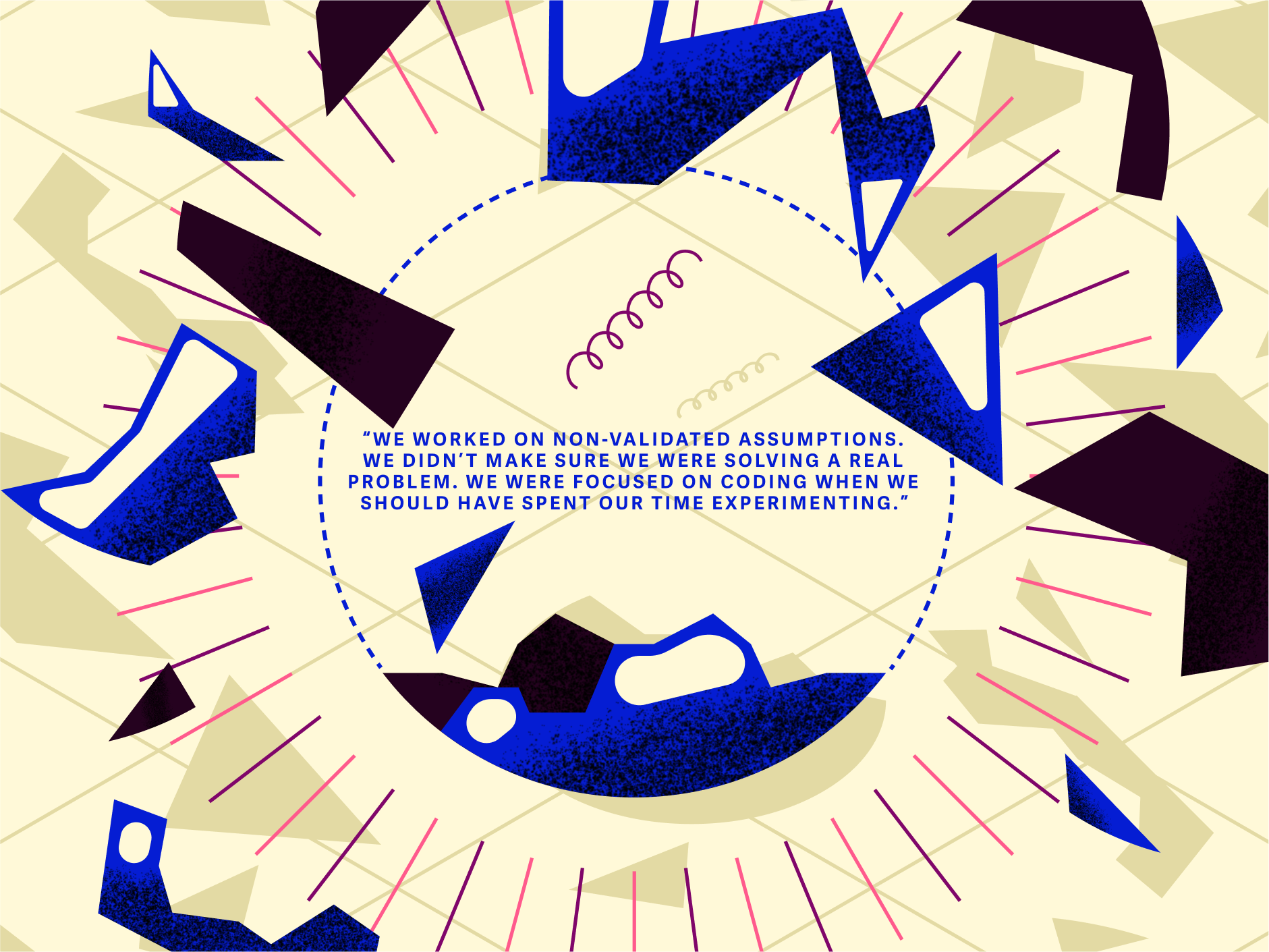
Gather proof around your ideas
before implementing them.
Download for free:
• VALIDATION HANDBOOK
• EXPERIMENT TOOLBOX
Lesson learned: Shift from planning to experimenting
There are many books talking about entrepreneurship. What I learned is that entrepreneurs shouldn’t do any business planning but rather spent all their energy in experimentation.
Startups and new projects work on assumptions. The danger of business planning is that it tends to take those assumption for granted. You spend months thinking of your perfect idea, planning what to do in order to break even. Everything seems fine, until it blows up. You realize that your customer doesn’t care. You can’t make up data, you’ve got to learn fast if your assumptions are true.
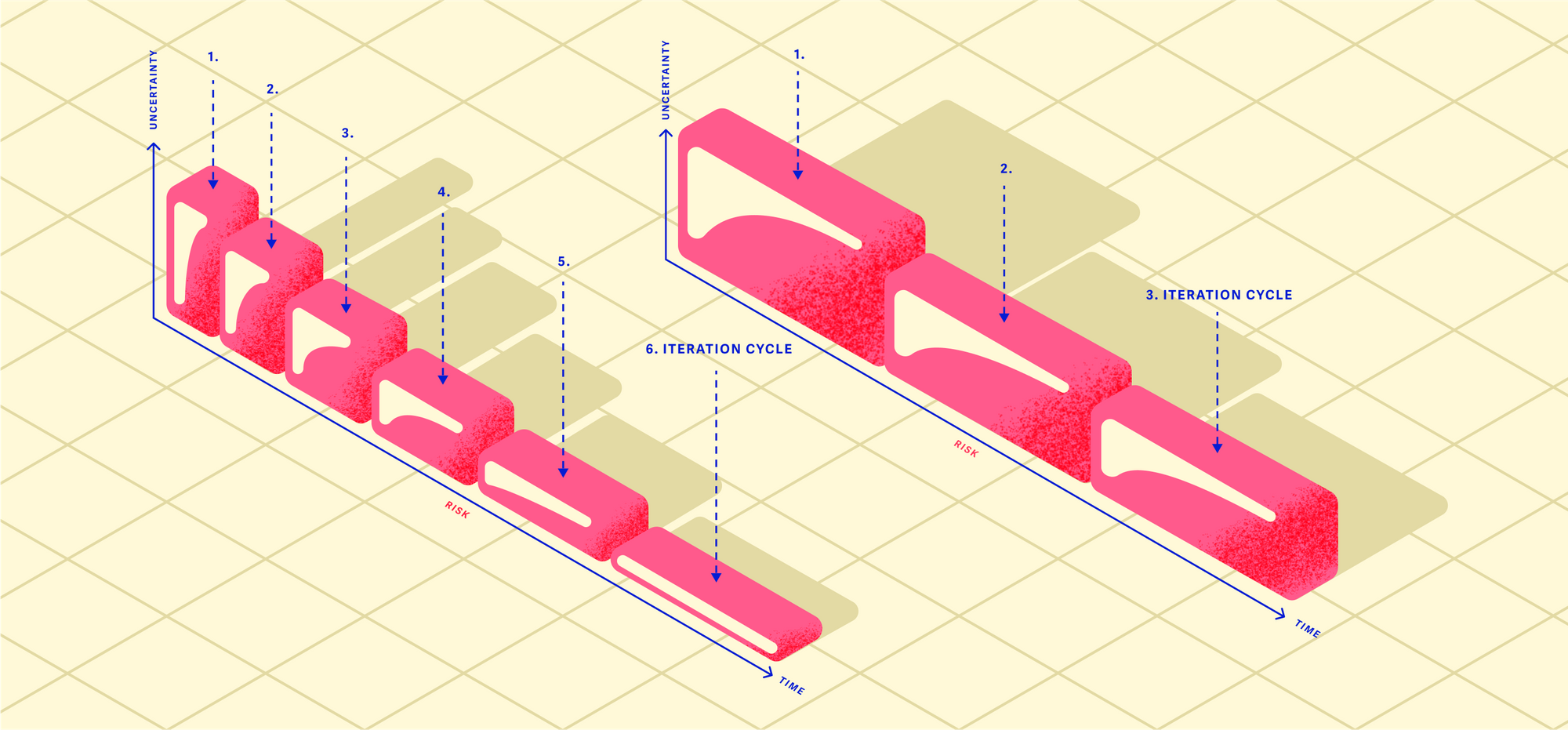
The faster you experiment, the faster you learn, the faster you’re likely to succeed. Creating a new product is risky. Risk means that you potentially are going to waste money and time. As a startup your only focus should be to reduce this risk. How do you do that, then? Well, you need to iterate really fast to maximize your learning!
The best out of this is that while you conduct your really short cycle of experiment you’re actually getting your first customer!
Get the right fit: First things first
"Fit between what a company offers and what a customer wants is the number one requirement of a successful value proposition.” — Value proposition, Strategyzer
There are three kinds of fit a startup should go through in order to be successful:
- The problem-solution fit: it happens when you have validated certain jobs, pains and gains of the customers. You already understood that there is a problem and you designed a value proposition to solve it. However, you still don’t know if people care enough about your solution to buy it.
- The product-market-fit: it happens once you prove that your value proposition is creating value for customers by reducing their pains and enhancing the gains they desire. Another condition is that your product start to get traction on the market.
- The business model fit: it happens once your value proposition is part of a profitable business model. You have succeeded to compromise between the value you deliver to customers and the profitability of the business model.
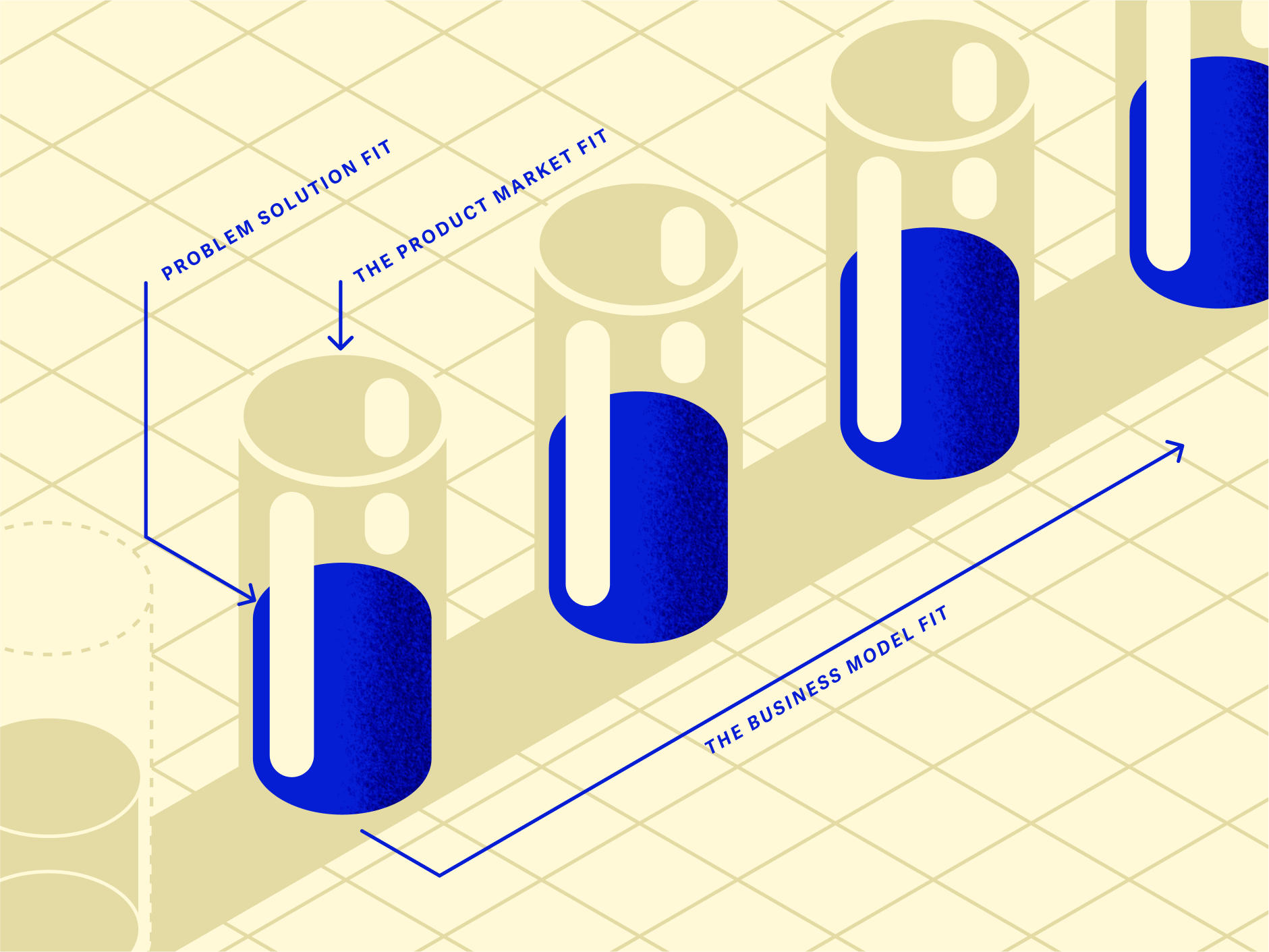
As an entrepreneur, your first and only target is to get the right problem-solution fit. Don’t bother with the two last fits, because you can’t get there without a solid foundation.
However, it takes time and iteration to get the right fit. Your original idea might prove itself totally different from what the customer wanted. The customer you expected using your product might be different from the one using it.
“Fall in love with the problem not the solution” — Common Design Saying
As an entrepreneur, you have to get a strong vision of what you want to accomplish. Don’t get me wrong, the vision shouldn’t be about your first idea, rather about the problem. Uber wasn’t in love with creating a cab service, they just knew they had to solve the problem of getting from point A to point B. For example, they already offer renting of bikes and e-scooters in the USA. They are even working on self-driving technology. Different solutions for one problem they fell in love with.
You should try to keep this liquid state where you are not sure yet what’s the best solution to the problem you are trying to solve. This is the only way you will be open to insights that prove that your were wrong about some of your assumptions and that it is time to test some new ones.
Trust the process
So, until now we uncovered the basic theory and mindset you should adopt. It is time to get our hands dirty. Hopefully there is a process, and it is fairly simple to apply.
1. Get the concept out
This step consists on getting the concept out of your head as fast as possible. It is advised to use canvases such as the Value Proposition and the Business Model. Don’t worry if you can’t fill up some boxes from these canvases, it is okay to not have the answers for now, it is just the beginning. Your canvases will get iterated and improved over time anyway.
2. Evaluate business model
You don’t want to start wasting time in research and talking to your first potential customer if your business model is crappy from the start. There is a set of 7 questions that allows you to assess if your business model is solid enough. If not, it might give you some good ideas on how to twist it a little. Then, you can try to stress it with numbers. Try to imagine right now, what are your cost, and how you can generate your first revenue. Try different scenarios with different pricing. You will see really fast which one is the best. This will help you to validate later the willingness to pay.
3. Assess competition
In general, most people think they are smart enough to come up with an idea no one had before. The truth is that most of the time this is wrong. After conducting a competitive research, if you found no real competitor, you didn’t look hard enough. Your competition might also be something you didn’t expect. For example, if you are building a taxi app, riding bikes may count as competition. There is a great template on how to do a proper competition analysis in the book UX Strategy by Jaime Levy.
4. Run quick customer discovery
You need to prepare yourself before going to talk to your assumed potential customers. You are going to write two things: a short screener with only a couple of questions so you only talk to relevant people; and a problem interview script, that is basically all the questions you want to ask. I created my own template based on the interview methodology by Justin Wolcox. After conducting a few interviews, you can improve your script. After you think you have enough data (at least 10 interviews) you can start analysing patterns and fill up the customer segment part of the value proposition canvas again. Make sure you capture all your learnings into digestible canvases.
5. Extract & prioritize hypothesis
After updating your value proposition with what you learned from your potential customer, you might want to twist your business model a little bit. Then, you extract all the hypotheses from both value proposition and business model canvas. Finally, you need to prioritize your assumptions from most to least impactful. This means that you have to find out really fast if your most critical assumptions are true or not.
6. Design tests backlog
For each of the most critical assumptions, you should try to design a test to verify them. At LB*, we created our own tool called Validation Handbook. There are clear steps from creating an hypothesis to launching an experiment. You can find two canvas, as well as a tool that helps you pick the right type of experiment.
7. Build, measure, learn
For each test you designed, you are going to build, measure and learn. For example, if you wish to measure the level of interest in your idea, you could build a cheap landing page, thanks to Wordpress or any website builder. On this page, you can put a nice background image and your value proposition as a title. Make sure to add a button that links to a contact form. Then you can connect some web analytics such as Google Analytics. You could also launch a Google Adwords campaign for some keywords and measure it. At the end of the experiment, you will know many people showed interest in your idea by interacting with the button and leaving their information in the contact form.
8. Capture learning and decide about the next step
You might found out that one or many of your assumptions were wrong. That's alright. You only spent a few hours building your experiment anyway. There's still time to update your value proposition and try another approach. This is the so-called pivot. Once you come up with some fresh ideas, go back to step 5, rinse and repeat.
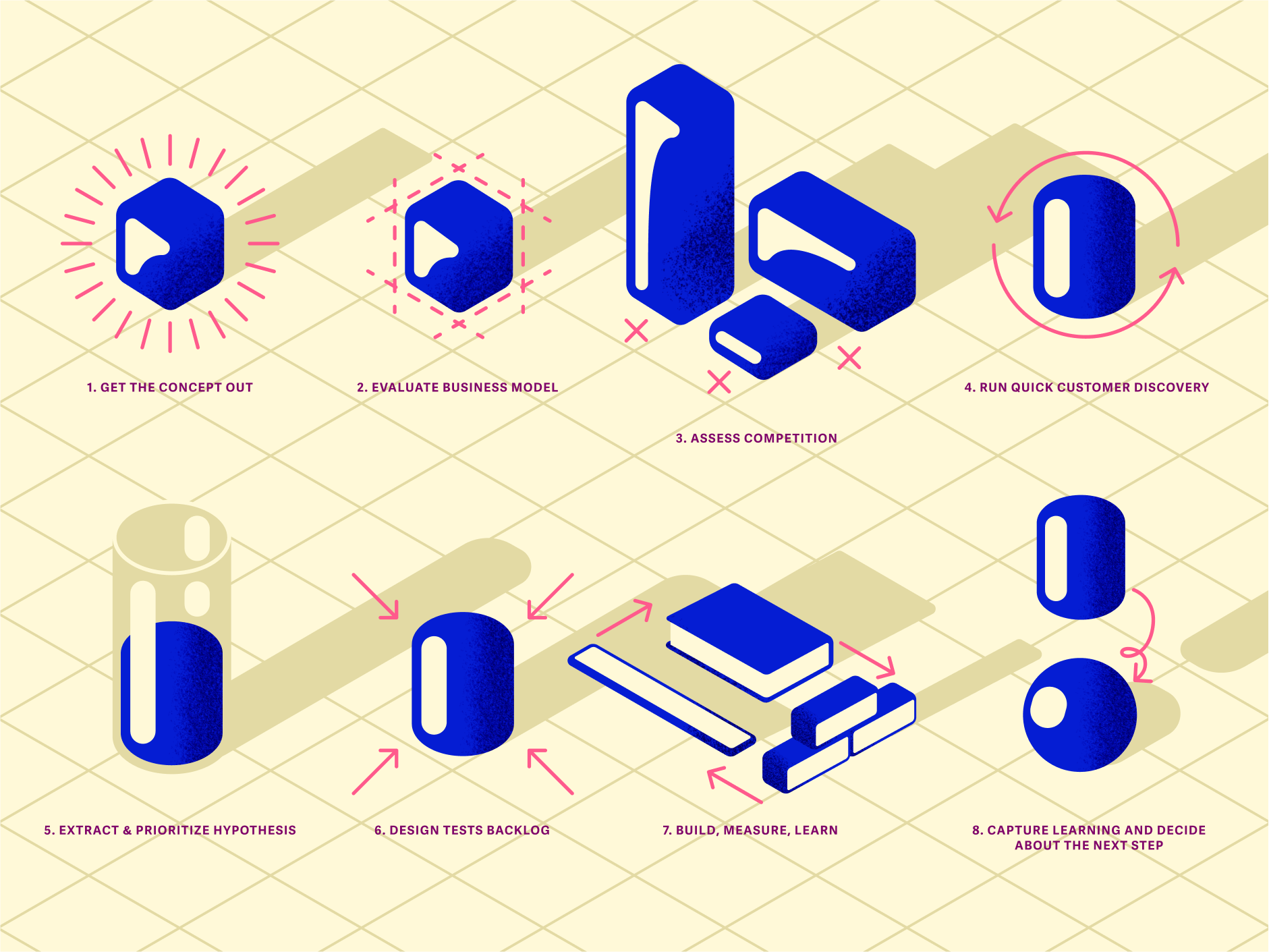
Wait, when do I get my first customer?
Remember, creating value for customers is about solving problems. People don’t care about your features, they just need them to achieve a specific outcome.
There might be a lot of people that have the pain you’re solving. However there is a smaller group of people who not only have this problem, but they are aware of it, they are actively looking for a solution, they already tried to put together some DIY solutions, and they have the budget to acquire a better one. We call them earlyvangelist.
What makes them special is that they don’t care if the first version of your product is a shady facebook group or an online form with manual work behind, because it is still better than their current solutions. Through your experiment, you should aim to get these people as customers, and you should start issuing your first bills.
Sounds good, but when do I start coding?
What is great about following this process is that you don’t have to code in order to get you first customers. You shouldn’t get a developer in your team before you validated / unvalidated the most critical assumptions. After you validated your most critical assumptions, you can still run some tests from you backlog, but in parallel you should start thinking about how you’re going to build your first “coded MVP”.
There are thousands of articles out there that explain better how to achieve product management and product excellence. Once you get your first “real” coded product to the market, within a few months, hopefully, you will be able to achieve the second fit: product-market fit.
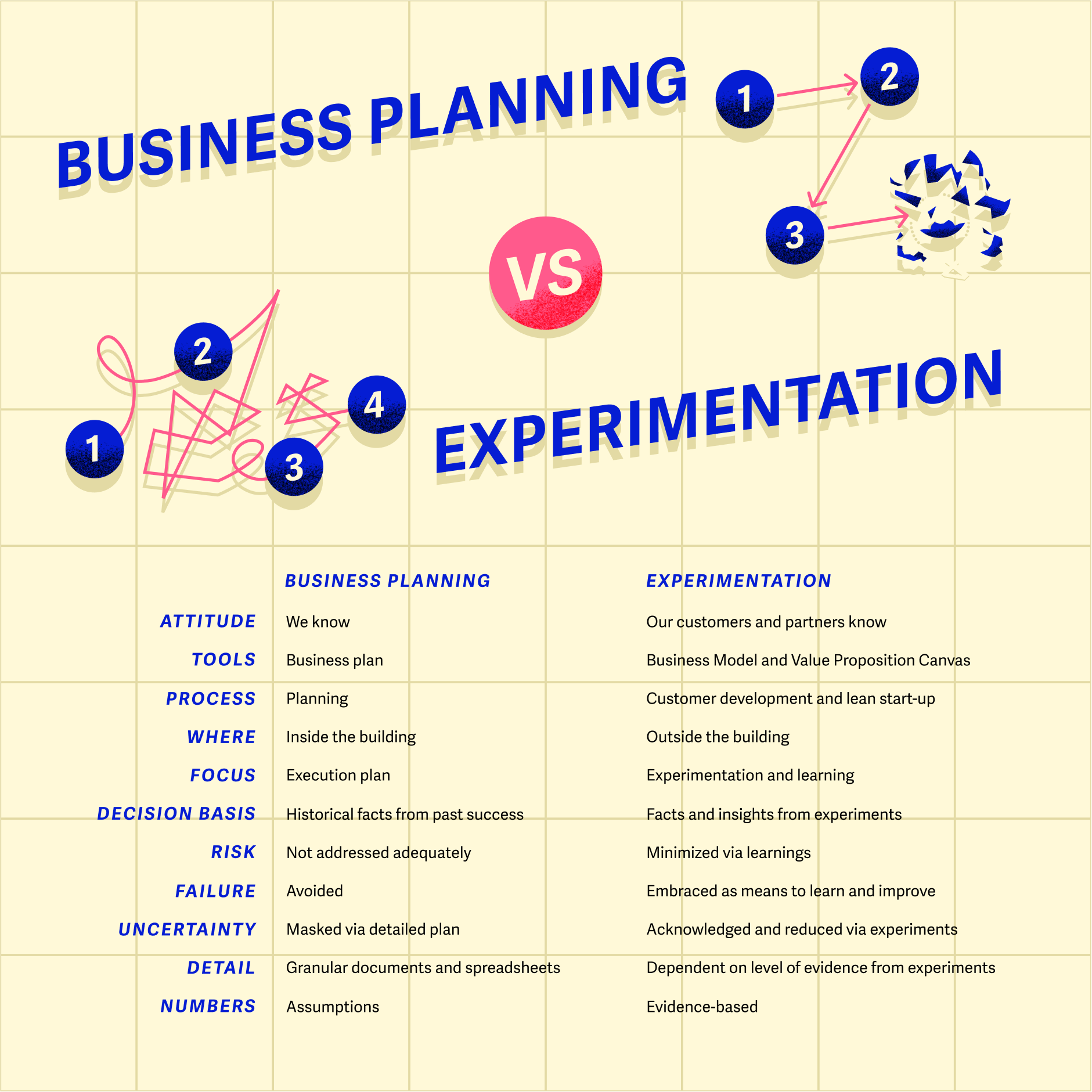
Conclusion
Building a product that customers want requires you to switch from planning to experimenting. You need to go out of the building to directly experiment with your customers. The faster you experiment the faster you’re likely to achieve the problem-solution fit which is the foundation of a successful startup. Only once you have proven your riskiest assumption true, you can start coding and assembling a product team.
The process of building value proposition and business model is messy and iterative, but it is absolutely crucial to the success of your new business. So roll up your sleeves and get your hands dirty.
Finally, I would like to make a huge shout out to Strategyzer for their amazing book that inspired me to learn and experiment. I would strongly recommend you to get a copy of the Value Proposition Design: How to Create Products and Services Customers Want
If you wish to know more about this subject, here are our favorite books about this subject:


